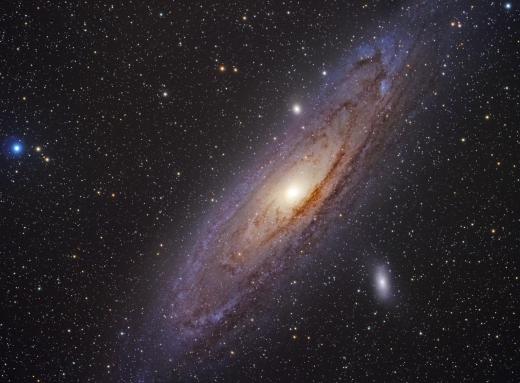What is the Spitzer Space Telescope?
 Michael Anissimov
Michael Anissimov
The Spitzer Space Telescope is an infrared space telescope, the last out of four space telescopes to be launched for NASA's Great Observatories program. The previous three telescopes launched for this program were the Hubble Space Telescope (in 1990), the Chandra X-ray Observatory (in 1991), the Compton Gamma Ray Observatory (in 1999). Each specializes on a portion of the electromagnetic spectrum.
The Spitzer Space Telescope is named for Dr. Lyman Spitzer, Jr., who originated the idea of space telescopes in the mid-1940s. The naming was unique for being derived from a contest open to the general public rather than a board of distinguished astronomers. Lyman Spitzer died in 1997, so he was never able to see the telescope bearing his name launch into space.

Infrared light is the light produced by heat. It is slightly less energetic than the visual portion of the spectrum, with a slightly longer wavelength, in the ballpark of micrometers. Every star emits infrared radiation in large quantities, allowing the Spitzer Space Telescope to observe everything an optical telescope can, and a little bit more.
Due to the fact that infrared light is invisible to humans and corresponds to no color with which we are familiar, images returned by Spitzer are given false coloring so that they can be interpreted by scientists. Spitzer is especially famous for its impressive shots of the Andromeda Galaxy, only two million light years from Earth — the closest galaxy to the Milky Way.

Spitzer is also famous for being the first telescope to pick up actual light from an exoplanet, which it did in 2005, but did not resolve it into an actual image. In 2004, Spitzer observed a faint star that is considered by many scientists to be the youngest ever imaged. One of Spitzer's primary tasks is to observe YSO (young stellar objects) and so-called stellar nurseries. The Spitzer Space Telescope's images are free to the public and for journalistic purposes, and have been published in the prestigious journal Nature, among many others.
AS FEATURED ON:
AS FEATURED ON:












Discussion Comments
@Maddie12,
One advantage of the Spitzer telescope being in orbit is that the infrared wavelengths from Earth and the telescope itself don't radiate, causing a glow, making it harder to view the distant stars.
What are the advantages of the Spitzer telescope being in space?
@Limpopo, you can go to the California Institute of Technology, or Caltech, website to view pictures from the Spitzer Space Telescope. There are some pretty amazing pictures!
Wow, this is an interesting article. Where can I view pictures from the Spitzer Space Telescope online though?
Post your comments